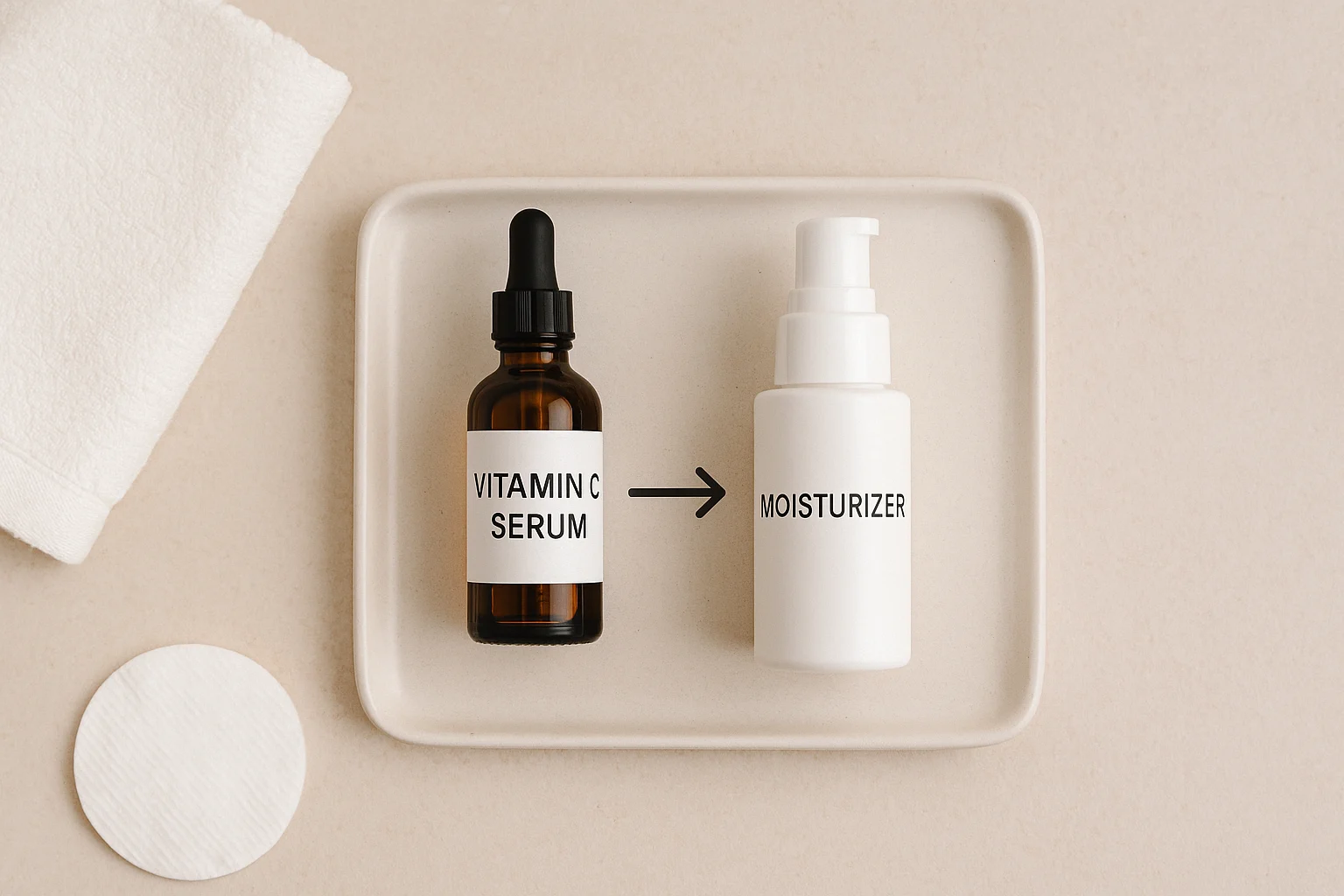Serum goes first, then moisturiser.
Vitamin C should be applied before moisturisers because serums are thinner and designed to sink deep into the skin, while moisturisers sit on top and help seal everything. Putting moisturiser first can block the serum from doing its job properly.
This is one of those skincare questions people often get backwards. You might think moisturiser softens the skin so the serum can work better, but that’s not how product layering works. Once you understand how products behave, you’ll stop wasting serum and start seeing results.
Why does this order work best?
Serums are like water, and moisturisers are like cream. Water sinks in, and cream coats. If you flip the order, you’re blocking what you paid for.
Most vitamin C serums are made with smaller molecules. They’re meant to penetrate deep into your skin and address problems like dark spots, dullness, and uneven tone. Moisturisers, on the other hand, are made with thicker ingredients like oils and emollients. They form a layer to keep hydration in and protect the skin barrier.
If you put serum after moisturiser, it just sits on top and doesn’t go anywhere. You might feel like applying it, but it’s not working as it should.
Think of it like painting a wall. You wouldn’t paint over wallpaper glue. You’d apply the paint first so it sticks, then seal it in. That’s what your skin wants, too.
What’s the right way to apply both?
Doing things in the correct order makes your products work better. Here’s how to use your vitamin C serum and moisturiser without overcomplicating your routine.
Start with a clean face. Use a gentle cleanser that doesn’t strip your skin. Pat your face dry with a towel—don’t rub.
If you use a toner, now’s the time to apply it. But if not, move straight to your vitamin C serum. Put 2 to 4 drops into your palm or fingertips and press it gently into your face. Don’t rub hard. Let the serum sit for at least one minute so it absorbs properly.
Once the serum feels dry or tacky, go in with your moisturiser. Just a thin layer will do. The moisturiser helps lock in the serum and keeps your skin from drying.
If it’s morning, always follow up with sunscreen. Vitamin C helps protect your skin but doesn’t block UV rays. Skipping SPF is like locking your doors but leaving the windows open.
When can this change?
You might need to change the order only if your product says so or if it’s not a serum.
Some people use a vitamin C cream instead of a serum. If so, it acts more like a moisturiser and should go after lighter products. Always check the label. If it says “serum,” it goes first. If it says “cream,” treat it like a moisturiser.
Another exception is if your skin is super sensitive. You might want to buffer the serum by mixing it with your moisturiser. This softens the blow and helps your skin adjust. However, it also makes the serum a bit weaker, so use that trick only if you’re dealing with redness or stinging.
One quick tip to keep in mind
Store your serum away from sunlight and heat. Vitamin C can break down quickly if left in the wrong place. Once it turns dark orange or smells weird, toss it. A bad serum won’t help your skin—it might irritate it.
Also, don’t use too much. More drops don’t mean faster results. Stick with a pea-sized amount, and let your skin do the rest.
If you’re layering other stuff like niacinamide or retinol, give each product a little space. You don’t have to wait ten minutes, but let one soak in before adding the next.
The goal is simple: Apply your serum to clean skin, seal it with a moisturiser, and protect it with sunscreen. That’s it. Keep it simple, stick with it, and you’ll get what you came for—brighter, smoother skin that feels healthy and looks even better.

